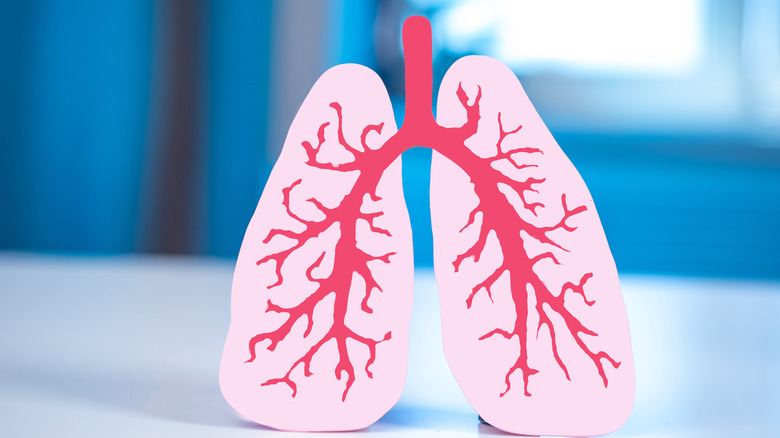Is There A Difference Between Your Right And Left Lung?
Our lungs — both of them — are amazingly complicated organs that have their work cut out for them every day of our lives. Breathing, laughing, coughing, singing, and even crying are all dependent on our lungs doing their job.
Humans have two lungs, which are nestled underneath the protection of the rib cage and sit atop the diaphragm. While at first glance they may appear to be very similar, the right and left lung are not the same in the way that our two hands or feet are.
The right lung is divided into three lobes, separated by two fissures, and is a little larger than the left lung, which consists of two lobes (with one fissure between them). It is also a little shorter. The left lung is slightly narrower and smaller because it shares space with the heart (via Verywell Health). Also, men generally have larger lungs and a substantially greater lung capacity than women, with the ability to hold almost twice as much air (via Lung Health Institute).
Not smoking is important for lung health
Despite their structural differences though, the function of both lungs is basically the same. Both work together, incredibly efficiently when healthy, to perform a complex gas exchange at the cellular level as we inhale oxygen and exhale carbon dioxide.
Jonathan P. Parsons, M.D., professor of internal medicine, associate director of clinical services and director of the Division of Pulmonary, Allergy, Critical Care and Sleep Medicine at the Ohio State University Asthma Center, notes that, while lung capacity and function is an important predictor of health and longevity, most of us do not our lungs to their full potential. "The lungs are over-engineered to accomplish the job that we ask them to do. In healthy people without chronic lung disease, even at maximum exercise intensity, we only use 70 percent of the possible lung capacity" (via Lung Health Institute). Exercising, as well as not smoking, are two of the best ways to help care for your lungs.


